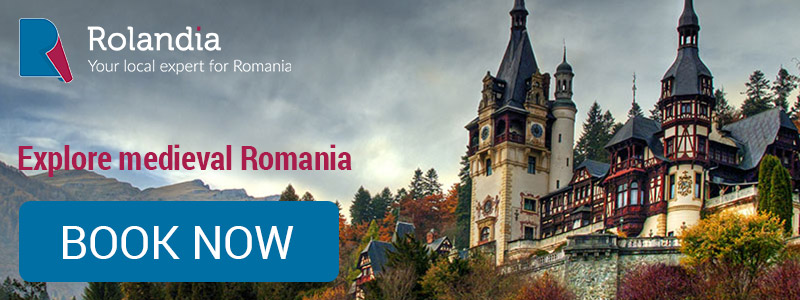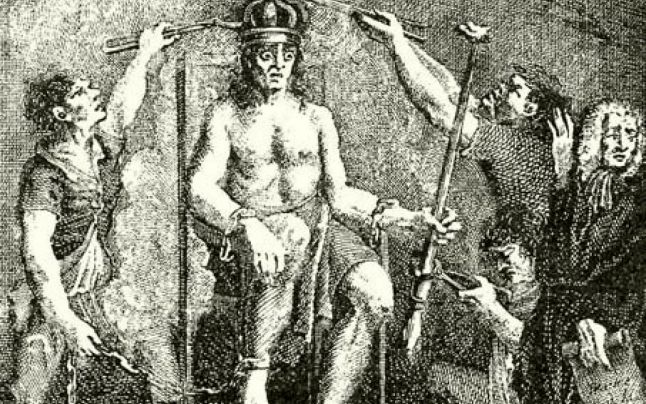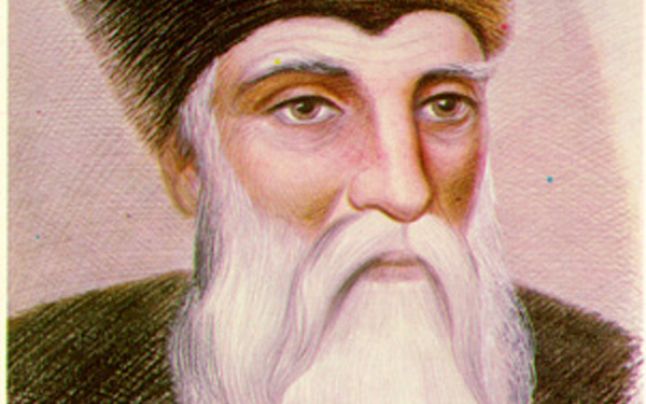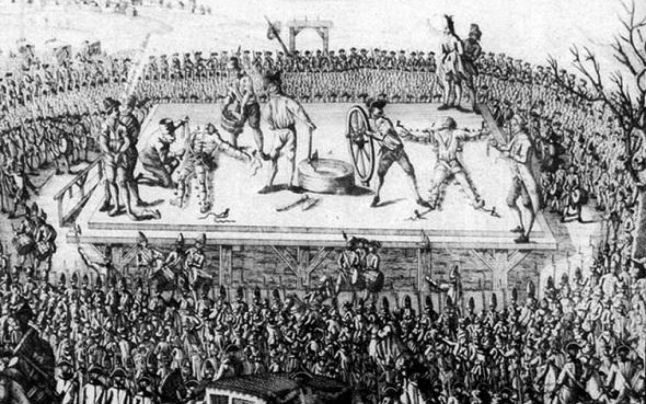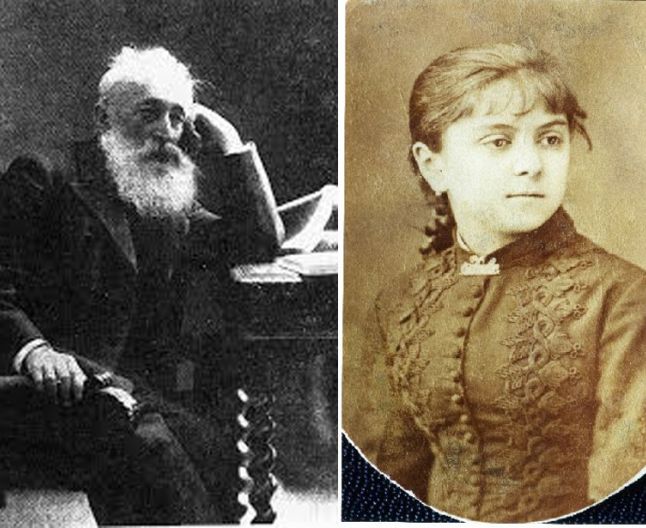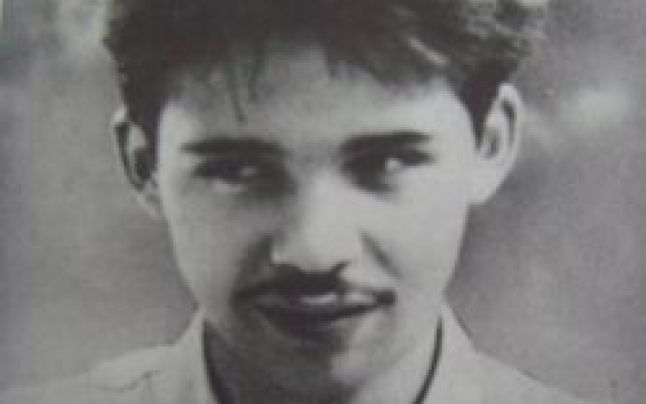10 tragic destinies in Romanian History you knew nothing about
History of RomaniaSince the Medieval Ages, Central and Eastern Europe were frequently the scenes of endless wars for power and influence. This geopolitical context led to numerous tragedies in the three historical Romanian provinces. The most notable figures that left their name in Romanian ancestry frequently suffered horrific deaths despite their efforts to change the norm of the time.
1. Vlad the Impaler (1476/1477)
Portrait of Vlad the Impaler. Photo source: Adevarul
Vlad the Impaler, more commonly known as Dracula, is the inspiration for Bram Stocker’s novel Dracula. The real man may not have been a vampire, but that doesn’t make him less impressive.
With a deep desire for revenge against the Ottoman Empire, Vlad rose to power on the throne of Wallachia. He managed to secure and consolidate his power through draconian punishments against the disturbance of public order that got him into terrible relations with his Saxon subjects.
The war against the Ottomans got him to the two most eccentric things he remained in history with:
1. The Targoviste night assault - Vlad and his retinues infiltrated the Ottoman camp and started a commotion. The Turks started butchering themselves while he was looking for the Sultan.
2. The 20.000 spikes with impaled bodies – Vlad missed the Sultan’s tent and had to leave the Ottoman camp at dawn. He retreated north with the Sultan and his army following him until they got to the horrible spikes Forrest Vlad left for them.
Vlad’s stoic resistance against the Turks wasn’t popular with the nobleman's. He got deserted and, due to his bad relations with the Saxons, got imprisoned by the king of Hungary.
Even though he manages to get back on his throne 14 years later, he suffers a horrible death. Vlad the Impaler is betrayed on the battlefield. The nobles abandon him, leaving him to face the enemies only with his guards. It is said that after he was killed, his head was cut off and sent to the Sultan to put it on a stake, and his body was chopped into pieces. His burial place remained a subject of debate even today.
2. Gheorghe Doja (1514)
The torturing of Gheorghe Doja. Photo source: Adevarul
Born in the Szekler low-class nobility, Gheorghe Doja, remained in history for The Peasant Uprising of 1514, when he was tasked to gather a crusading army from the Hungarian kingdom, but instead turned every peasant, poor and oppressed man against the nobility and the church.
Even though he managed to gather a large peasant force, the difference in experience, equipment, and discipline between his army and the Hungarian nobles’ army led to his defeat.
The Hungarian authorities were anything but kind to him after his actions, and he was ironically “enthroned.” The executors tied him up with heated iron chains on a heated iron throne. They put a heated iron crown on his head and a heated iron sceptre in his hand. Afterwards, he was drowned out of blood, beheaded and cut into four parts. The blood and pieces of flesh from torture tools were then given to the prisoners to eat and drink. As for his sliced-up body, it was exposed in pieces in the major cities of the Hungarian kingdom.
3. Ioan III the Terrible (1574)
Portrait of Ioan III the Terrible. Photo source: Descopera.ro
As a nephew of Stephen the Great, Ioan III the Terrible, was the last Romanian medieval ruler to battle the Ottoman Empire. He had a short two-year reign in which he strengthened his rule by concentrating on political power and weakening and tormenting the nobles and clerics. To turn them against each other, he even started to take lands and riches from the clerics and give them to the nobles, and after a short time, he would take from nobles and give them to the clerics.
He was a man ahead of his time and brought reforms in the Moldavian society, economy, and administration. He would also reorganize the army, focusing on very well role-defined infantry and a large corp of light artillery.
The new military reform allowed Ioan III to gain several crushing victories against his enemies. But in 1574 The Ottoman Empire organized a large 150000 soldiers expedition against the Moldavian prince.
Ioan Golia, his trusted adviser and the leader of the 13000 cavalry corps, betrays Ioan III by switching sides. Ioan III continued the battle anyway, obliterating the traitors with the Moldavian light cannons.
After a long and hopeless resistance, Ioan III turns himself in in order to save the lives of his remaining soldiers. He is stabbed in the heart, beheaded and ripped into pieces by four camels. Ioan III the Terrible had immense strength, a titanic figure and great courage, so the janissaries started taking bits of his body, believing his blood and bones were enchanted.
4. Michael the Brave (1601)
Portrait of Michael the Brave. Photo source: Adevarul
Michael the Brave is one of Romania’s greatest national heroes. He was the first Romanian Prince to ever unify the three principalities (Moldavia, Wallachia, and Transylvania).
At the beginning of his reign, he entered the Christian alliance of European powers to fight the Ottoman Empire. Due to political instabilities inside Moldavia and Transylvania, Michael had to take command of the two principalities.
Political alliances Early modern period were much like in Game of Thrones, as soon as there was an opportunity betrayal would arise. The nobles of Transylvania betrayed Michael, and Moldavia and part of Wallachia were taken away with the help of the Polish army.
Michael sought the help of the Hungarian King to take back Transylvania while Michael’s son, Nicolae Pătrașcu, would take back Moldavia.
The Emperor ordered General Georgio Basta to aid Michael. With the military support of General Basta, Michael was able to win the battle of Guraslau.
Michael the Brave suffers a horrifying death after an inspiring victory. General Basta decides to assassinate him and sends a few soldiers to arrest him. They catch him, and Michal tries to resist the arrest, but he is shot and stabbed. After he is killed, the Basta’s soldiers behead him with his own sword and leave his body on a dead horse outside the tent to rot for three days.
5. Lady Ruxanda (1687)
Lady Ruxanda. Photo source: Adevarul
Lady Ruxandra was the daughter of the Moldavian Prince Vasile Lupu. She is said to be one of the most beautiful and desired women of her time. Her father tried everything he could to protect her and marry her above, but the man who was determined enough to take her was a Cossack commander. He brought a 100.000 man army and invaded Moldavia in order to convince her father to give Ruxandra to him.
The unmatched beauty brought Ruxandra popularity, but it also brought a sad life and a tragic destiny. Her husband died soon after her marriage, and she had to fend-off pushy suitors all her life.
Her horrible death took place in Neamt Fortress, where she took refuge because of the invading Cossacks army. A group of Cossacks conquered the fortress and took her prisoner. They stole everything she had and tortured her for days. In the end, they beheaded her on a doorstep inside the fort.
6. Miron Costin (1691)
Miron Costin. Photo source: Adevarul
Miron Costin remained in Romanian history as one of the greatest chroniclers, chancellor, and diplomat of Moldavia. Even though he was wise and made a significant contribution to the country, his brother Velicico was nothing alike. Velicico was a reckless and arrogant man who often got into arguments.
During a wedding, Velicico got drunk and started telling people there was a conspiracy against Prince Costin Cantemir. The prince heard about it, brought Velicico to court and executed him, then sent his retainers to bring Miron Costin to the court.
Miron Costin was most likely to clear his name once he was brought before the prince, but the chief of the retainers got bored and decided to behead him on the way.
7. Constantin Brâncoveanu (1714)
Constantin Brancoveanu. Photo source: Descopera.ro
In Romanian History, few Princes managed to rule for a longer period, and even fewer managed to keep a lasting peace. Constantin Brancoveanu was an extraordinarily rich man even before he ascended to the throne, and through his famous wealth, he managed to stay in the grace of the surrounding European powers.
He played as well as he could and developed an impressive spy network which allowed him to get information from every country on the continent. His network of spies helped to improve his relations even more, giving information about both sides to both sides.
Playing friends with everyone assured a long reign for Constantin Brancoveanu, but in the end, this is exactly what got him killed. His external political relations and his enormous wealth attracted intrigues and envy and in 1714 was dethroned and brought to trial at Constantinople.
The execution was sadistically decided to take place on his birthday, and even more sadistically, Constantin was forced to witness the execution of his four sons and his counsellor before being beheaded.
After the execution, the heads were carried on spears through the city, while the bodies remained at the execution site, from where they were thrown into the sea at night.
8. Horia, Closca, and Crisan (1785)
Horea and Closca Execution at Dealul Furcilor. Photo source: Adevarul
The last peasants uprising in Europe happened in 1784 and was led by Horia, Closca, and Crisan. The oppression of the serfs reached a point where peasants weren’t even able to pay their taxes. Being drawn to a corner, the peasants rose against the nobility and committed various atrocities.
After the Imperial army defeated the uprising peasants, the leaders were brought to trial and punished.
Horia and Closca were publicly executed - they were bounded on two logs and repeatedly hit with the wooden wheel until they died. Crisan hanged himself with the straps from his sandals.
Soon after that, their bodies were cut into pieces and exposed, impaled on pikes in the settlements they were from.
9. Iulia Hasdeu (1888)
Photos of Bogdan Petriceicu Hasdeu and Iulia Hasdeu. Photo source: Adevarul
Iulia Hasdeu is a unique phenomenon in Romanian culture. She was already speaking, reading and learning French at two years old, and at four she started writing. She wrote her first short stories at 7 and her first play at eleven.
At 16, she was the first Romanian woman to be accepted at Sorbonne University from Paris. Unfortunately, in Paris, she got tuberculosis. Her bright future was to end when she was 18 years old.
Instead of treating herself, she cared more of her studies, and when the disease got too rough, she returned to Romania. She spent her last days coughing blood and writing.
It’s said that her father, Bogdan Petriceicu Hasdeu, missed her so much that Iulia’s spirit actually contacted him in order to tell her father that she was well.
Soon after the said incident, Hasdeu dedicated himself to mysticism in order to contact his daughter again and building a temple over her resting place and a Castle in her memory.
10. Nicolae Labis (1956)
Photo of Nicolae Labis. Photo source: Adevarul
Nicolae Labis was a Romanian poet who made himself known at the time through his remarkable work of art. The Communist regime was a hard time for poets and especially if you would think against the system.
The 21 years old Nicolae Labis started to question the regime and “incidentally” died in a horrific tram accident.
The investigation report concluded that he was drunk and slipped from the tram’s stairs right between the tram cars. Nobody dared to say something else.
On the agonizing days he spent in the hospital before he died, he told his friend in an interview that someone pushed him off.

